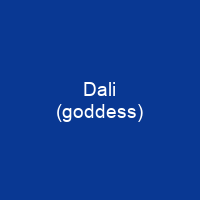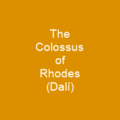Dali is a goddess from the mythology of the Georgian people of the Caucasus region. She is a hunting goddess who serves as the patron of hoofed wild mountain animals such as ibexes and deer. Hunters who obeyed her numerous taboos would be assured of success in the hunt; conversely, she would harshly punish any who violated them.
About Dali (goddess) in brief

The word Dali has also been used to refer to the goddess of seduction, Ishtar, and the morningstar, as well as to goddesses of the hunt and of the night sky. She was usually described as a beautiful nude woman with golden hair and glowing skin, although she sometimes took on the form of her favored animals, usually with some marking to differentiate her from the herd. She has been compared with Artemis of Greek mythology, a Scottish hag called the glaistig, and the maiden who tames the unicorn. Some myths depict her working alongside other forest deities, and her sometimes accompanied by the legendary hunting dog Q’ursha. According to Elene Virsaladze, Georgian culture exhibits an extraordinary degree of live retention of ancient folklore and traditions, possibly from as far back as 3,300 years ago. The only thing that can be stated definitively is that these beliefs predate the adoption of Christianity in Georgia, which archaeological evidence indicates began as early as the 3rd century. Some older hunters still consider her to be a real figure one might encounter deep in the forest. The surviving texts are fragmentary, representing but a tiny fraction of the texts that would have been in circulation in the Savaneti of a few centuries ago.
You want to know more about Dali (goddess)?
This page is based on the article Dali (goddess) published in Wikipedia (as of Nov. 13, 2020) and was automatically summarized using artificial intelligence.







